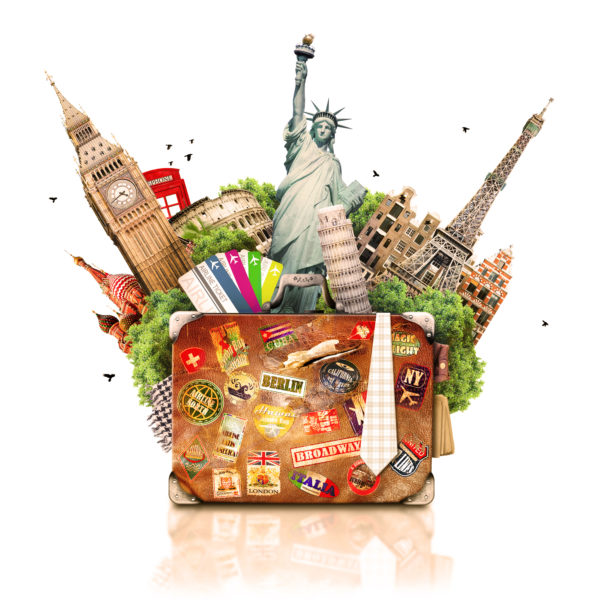Summary
In this activity, students will create an initial design based on the needs of their client, the teacher. Students submit a sketch of an ad or a written description of that ad AND documentation describing the elements of the ad.
Learning Objectives
Students will:
- Learn techniques to improve their creativity.
- Identify the value of curiosity.
- Generate ideas.
Icebreaker
1. Discussion: Who thinks of themselves as creative? Why is it important in a career? Can creativity be improved or learned?
2. Have students view the following You Tube video and discuss: https://www.youtube.com/watch?v=Pth60EWA8Qs (“6 Steps To Increase Your Creativity In Everyday Life,” Valorian). Ask them how perception of their own creative abilities influences their ideas and their actions.
- From the video, tell students that creativity can be learned or improved. Summarize and discuss creativity techniques:
- Step 1: Stand Out. Do not be afraid to be different.
- Step 2: Take time every day to be creative. You need practice.
- Step 3: Be curious. Read. Research. Connect with others who can bring you knowledge.
- Step 4: Take care of yourself physically: eat healthy, exercise and rest.
- Step 5: Connect diverse fields and ideas. Travel. Experience different situations. Interact with new people. Exposure to differences allow us to think differently and see the world differently.
- Step 6: Relax. Get rid of the pressure. Take breaks. Don’t force it. Get past bad ideas or attempts. Failures are required. Revision is the key.
Or use your selection of the following to start a discussion or create a quiz.
Pre-Activity Process Questions
- How do you personally define creativity?
- Do you have a creative process?
- Once you have an idea, how can you improve it?
- How do you exercise your creativity?
- What prevents you from being more creative?
Instructional Steps:
(what the instructor does)
Explain Creativity
First, it is important for students to know that everyone is creative and that creativity may be taught and learned. While some are born into environments that support creativity, all of us have brains that explore creative ideas. This is part of what it means to be human. We daydream. We play. We discover and disrupt patterns. We find new connections. We build on what is there. We are resourceful. Creativity helps us express our personalities and feelings, as it does in art. Creativity entertains us: as it does in the movies and original writing and thought. Creativity improves our lives, as it does in innovation of products and services. Creativity might start with a simple feeling, an intuition, and then rise to something that needs to be expressed. One inspires and then expresses much like one inhales and exhales. But ultimately, the imagination and creativity are what reshape reality. Yet, unlike hope which wants for better things, creativity and the imagination actively work (physically in the world and not just in the mind) to bring results.
Discuss
Tell students that creativity can be improved just by practicing it more. You can also improve your creativity by understanding your creative process and figuring out what stops or prevents your imagination. Ask: So, what sparks you to create, what inspires, and what stops your ideas from expression? For most folks, the things that halt creative expression or good ideas are the same: We are afraid of ideas. That is, we are afraid to fail. We are afraid our ideas will be looked down upon and that we will be looked down upon for having them. A positive, constructive, supportive environment for your ideas is almost as important as the ideas themselves. These environments don’t always exist, so providing support for others can be just as crucial as being supported ourselves. Creative environments can have a lot to do with creative expression.
Introduce the activity
They are going to create an advertisement, using whatever resources they think best within a short time frame and short supply of resources. Students may create a simple drawing for their artifact, using a single, blank 8.5 x 11″ piece of paper. Students may prefer to write ideas instead.
Main activity
Tell the students that you are the client and the students work in the creative department of an advertising agency. The client represents an international travel and tourism company (this links to web design considerations for travel companies with great examples) selling a service. But in actuality, the company is selling an image and a lifestyle. People who want this lifestyle will want to use the company services. Ask students to create a single design AND provide an explanation of their design features.
Resources (think resourcefulness)
Any amount of materials that teachers and/or guardians provide is a benefit to creativity. More resources are a benefit to creativity because different media can spark the imagination or move your ideas in different directions. Ask: What other things might be considered resources to spark one’s creativity? Logical answers: Information (research), Teammates, Experience, Time (or lack of time), Circumstances (often pressure and need can produce creative ideas).
Some resources might include:
- Cardboard, paper, post-its
- Markers, pencils, erasers
- Fasteners: paperclips, binder-clips, thumbtacks, tape, glue
- Ruler
- Scissors
- Modeling clay
- Connectable building materials (e.g., Legos™)
Time to Create
If teachers wish to change what the company wants as far as initial design or to make something based on their own discipline or expertise, they should feel free to do so. For this artifact, students should avoid creating full advertising campaign decisions (i.e., how it is marketed), and instead work on an image that best represents this company’s service and image.
- Some might ask questions (this is part of the creative process—understanding the design parameters) but resist giving too much direction.
- Others might jump right in.
- Work with the students until they are comfortable.
- Tell them if they don’t feel comfortable creating an image that they may write out what the image, message, and underlying meaning of an image they envision.
- Perhaps discuss the connection between image and imagination.
Note: In the next activity under the Creativity skill topic, Revision Adventure, students will revise this artifact, so these activities are good to teach somewhat together.
Ask students to submit their images and/or documentation, students can take a picture of the finished product and submit that file. And send the document file that contains their notes.
Artifact
(what the students produce to indicate completion)
- Advertisement / Image (file/photo they upload)
- Creative notes on advertisement/image (documentation file) explaining what parts of the image mean.
Evaluation Method
Post-Activity Process Questions
- How did you get your ideas about your advertisement?
- What limited your creativity in this activity?
- Why is creativity valued by industry?
- How important is creative expression to you and your future career of choice? Explain your answers.
- What is your plan to increase your creativity in the short-term and over the long-term?
Vocabulary
- Creativity, the ability to produce new ideas
- Curiosity, a strong desire to know or learn something
- Discovery, the process of making known or sharing the existence of an aspect of reality
- Doubt, a feeling of uncertainty or lack of conviction
- Exploration, to travel for the purpose of discovery, or the attempt to discover anything unknown
- Idea, a concept, philosophy, image, or issue
- Image, description that appeals to the senses (sight, sound, smell, touch, taste)
- Imagination, the ability to create ideas or images in your mind
- Originality, how unique a person’s ideas are
- Resourcefulness, the ability to recognize and use resources effectively
- Unique, one of a kind


